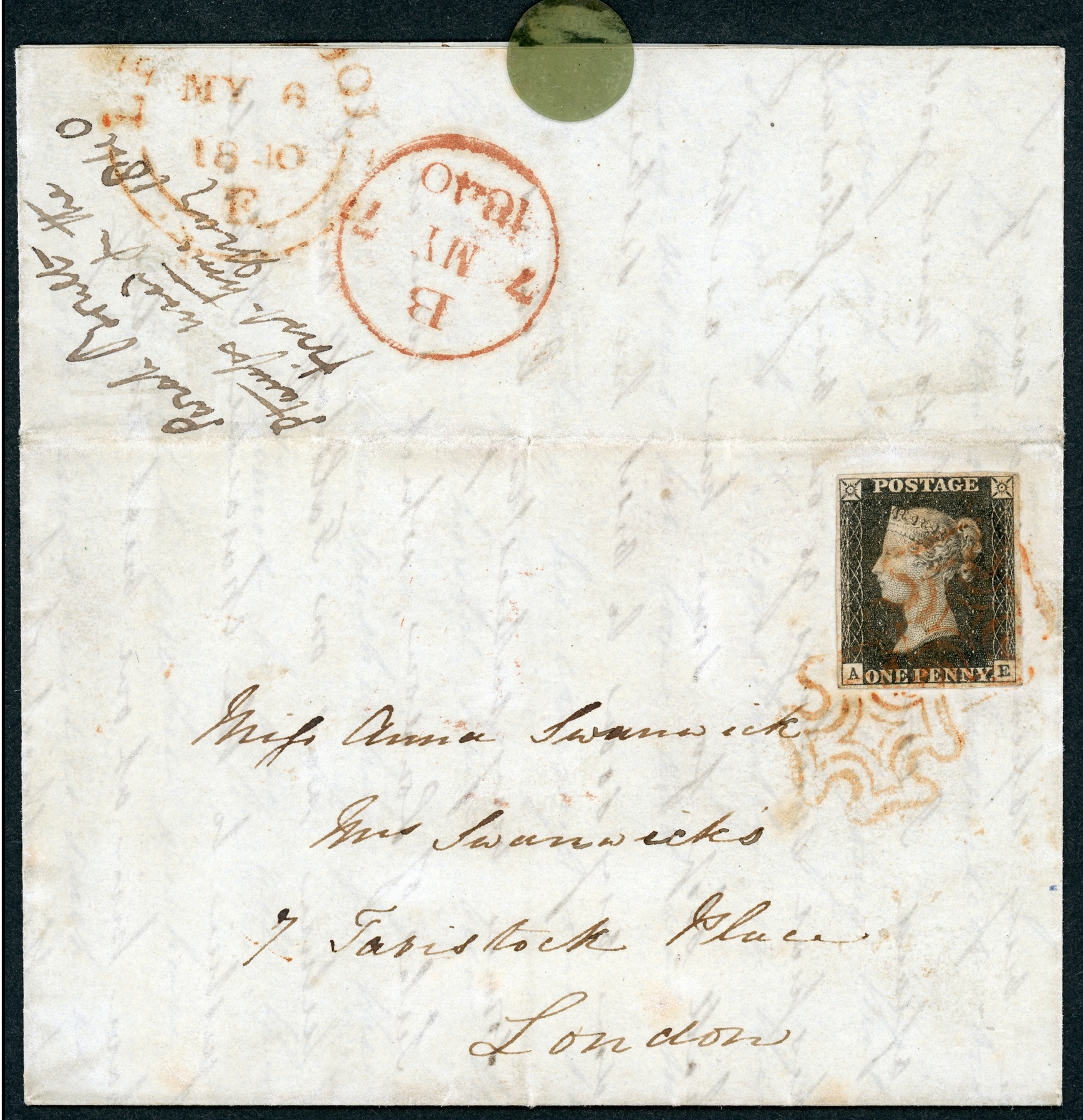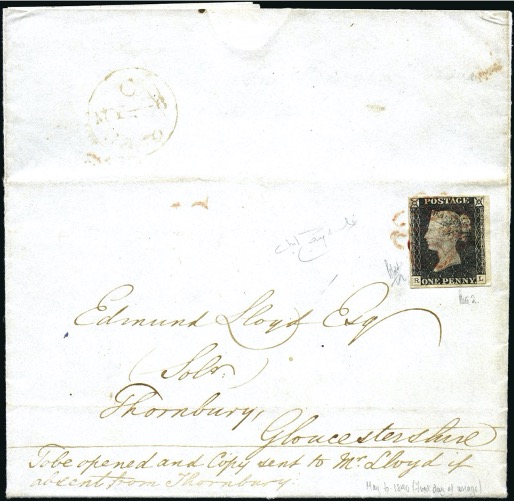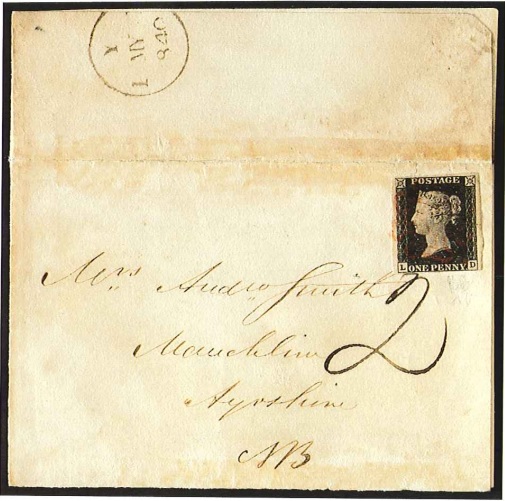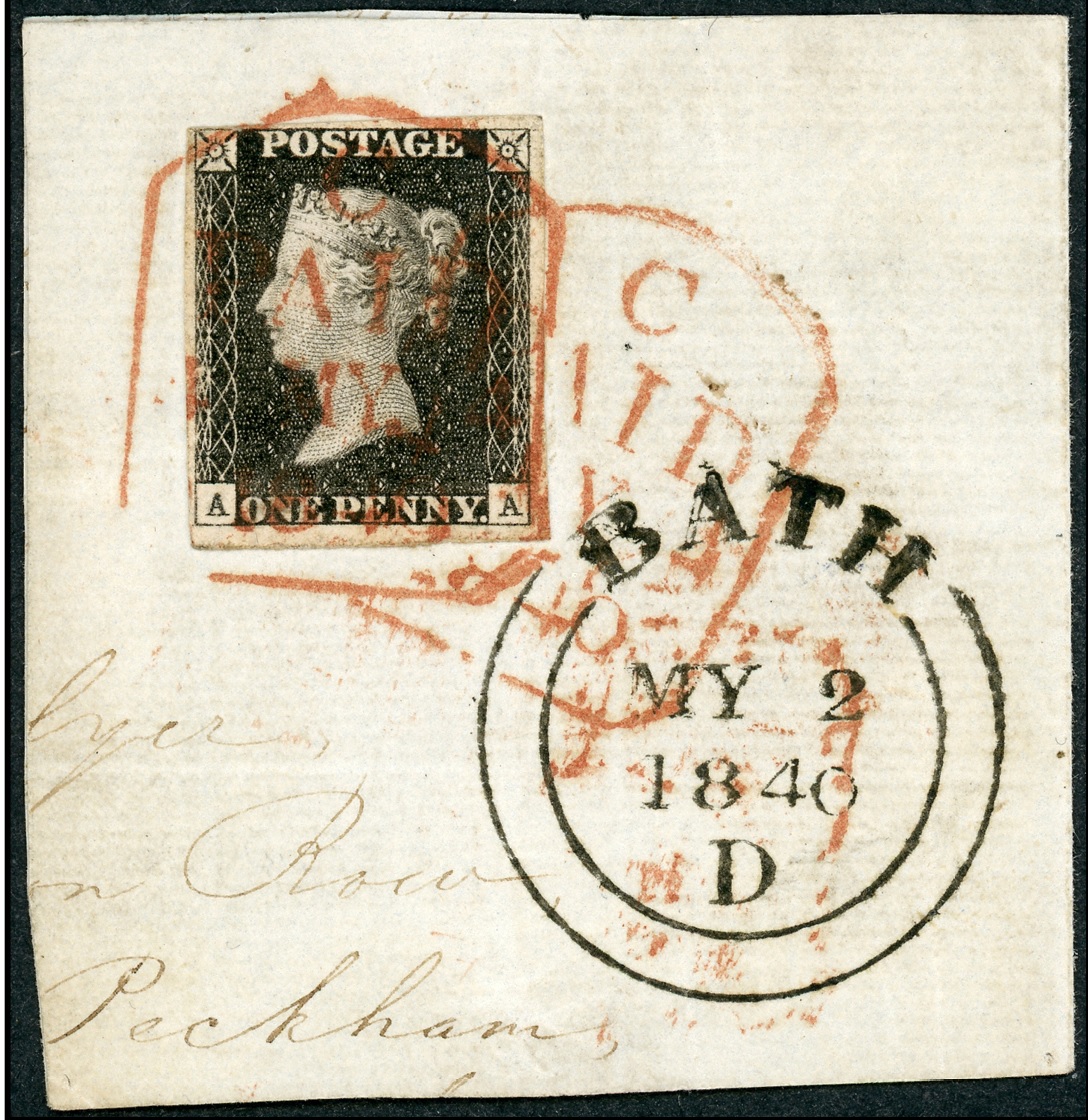To celebrate the 181st birthday of the world’s first postage stamp we take a closer look at what the Museum of Philately has to show on this iconic adhesive.
The most common misconception about the Great Britain 1840 Penny Black is that it’s a rare stamp. Icon yes, rare, no. Whilst many philatelists might be aware that the year long printing of this first postal adhesive produced over 68 million copies, and approximately 2% of these have survived, most non stamp people, and even some collectors, think it is far less common than it really is. If you told the uninformed that there are about two million of them floating around they’d probably think you were mad. And indeed it’s value, despite its numerical preverleance, does kind of suggest it must be scarcer than it is, but the problem there is that you have to take into consideration ‘demand’, and because of it’s undisputed status as the world’s first postage stamp, there are a lot of people who just want a copy regardless of what country or theme they might collect, and that will probably never change. However, true rarity can be found amongst this rather large pile of black Queen Victoria postage, because there are only 840 covers known to have been used during the first month, and a lot less surviving examples from the first official day of use, the 6th May 1840 where there are thought to be just 71 genuine examples, and even less which were used unofficially before this date and the 1st May when they went on sale.

So to celebrate the 181st birthday of the mother of all stamps, let’s take a closer look at some of the ‘rare’ examples which feature within the Museum of Philately, and then the even ‘rarer’ still.
One of the 6th May examples we have features a very fine four margin 1d Black Plate 1a (AE) which is rather attractively struck with two red Maltese Crosses and sent from London to Liverpool. What is nice about this entire is that the sender states that they felt it their duty to send a letter ‘for the first day they will be useful’. And thank goodness they did. It is a practice which has survived along with this example. First Day Covers still being a highly active part of the hobby.
Similarly we have a 6th May cover which is franked with a Plate 2 (RL) example tied by a single red Maltese Cross, again sent from London, to Thornbury in Gloucestershire. This sold in a David Feldman SA auction in 2014 for EUR 32’000, and was accompanied at the time with a BPA certificate. Both these covers feature in the reference book on this topic ‘May Dates’ by Michael Jackson, which is a survey of Penny Blacks, Twopenny Blues, Mulreadys and Caricatures used during May 1840. Whilst it is out of print now, you can from time to time pick up second hand copies, and it is considered to be the authority on this subject and worth looking out for.

But what of the unofficial use prior to the 6th May 1840? Well, there is the 1st May 1840 cover which features a Plate 1a (LD) tied to an entire by a red Maltese Cross, sent from London to Scotland, and this cover only came to light in 1978 and caused quite a ripple in the philatelic world, with some saying it must be a fake. However, over the subsequent 15 years it was scrutinised and tested and eventually picked-up no less than four expert certificates from, RPSL (1997), BPA (1992), Peter Holcombe (1992) and Michael George Hall (1991). It was also the recipient of a number of affirmative articles, probably the most significant was P.C. Pearson’s exposé called “1st May 1840: The Story of Investigation” (1998). This and another article by James Mackay were reproduced within a 1999 auction catalogue produced by David Feldman SA back in 1999, and well worth a look. The thing to note on this particular letter is that the cover went unpaid through the postal system, the manuscript ‘2’ denoting what was to be paid by the recipient upon receipt, thus the Post Office official clearly recognising that the 1d postal adhesive was not valid, and charged it in the manner associated with a postage due.
And probably one of the most famous penny black ‘pieces’ is the 2nd May 1840 Bath use. You’ll have noticed that the three covers mentioned so far have all been sent from London. Provisional use in general of the penny black is always scarcer regardless of month of use, and indeed of the 71 covers mentioned above 52 of them came out of London. But this piece of eye candy slipped through the system four days early and has the benefit of being from plate 1a and letters AA. In some quarters this is considered the mother of all stamps. That is it being the first plate registered and occupying the very first position upon the sheet of 240, AA-TL. Whatever your view on its parental status there is one thing that you can be sure of, that it is extraordinarily rare, being a unique piece, and so whilst the Victorians were prolific in printing a total of 286,700 sheets of penny blacks, their use between 1st May and the 6th is what we in the philatelic world would say really is rare.


